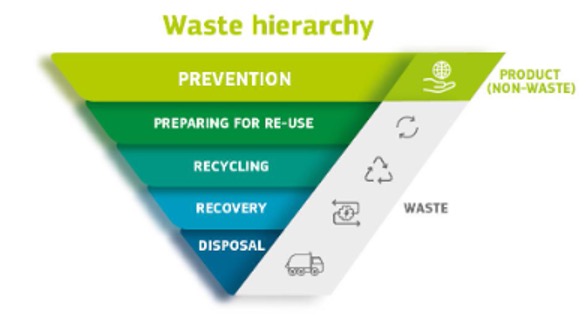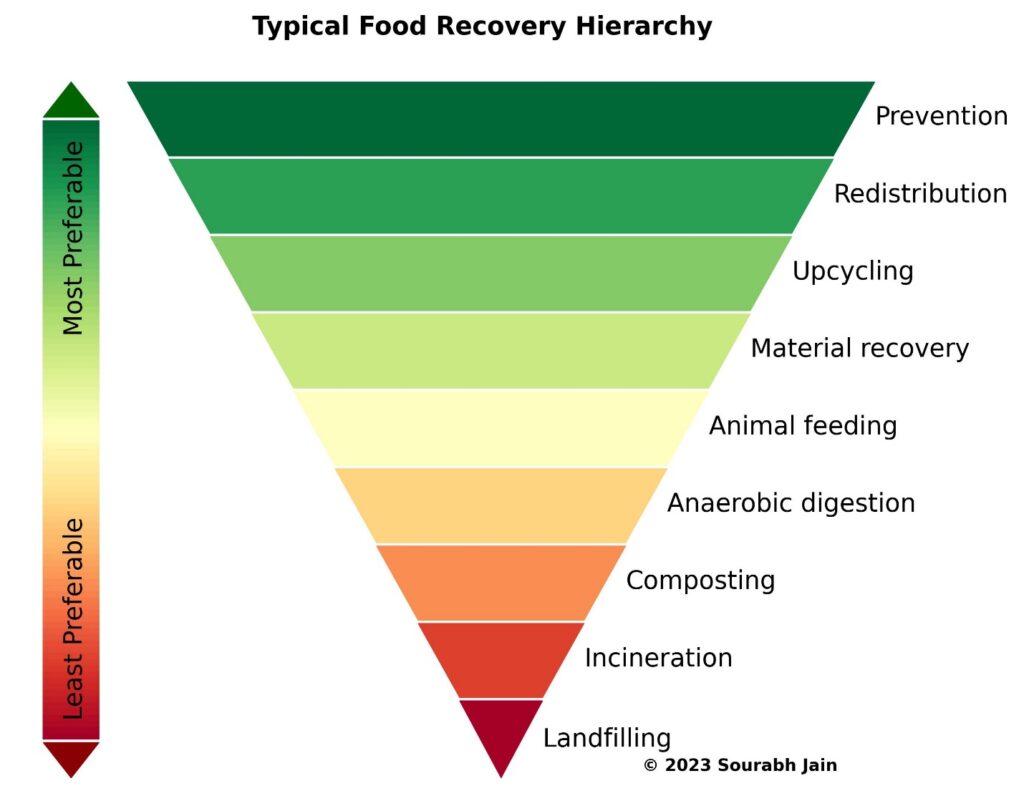The circular economy could reduce food waste and make agri-food more sustainable. But solutions aren’t automatic.
Sourabh Jain is a researcher at Ivey Business School (Canada).
I first heard about circular approaches in the early 2010s, when I began graduate education in the United States. Since then, “circular economy” has become a buzzword for researchers, policymakers, and companies. Everyone wants to make everything circular as much as possible and as quickly as possible.
The circular economy can seem like the ultimate strategy for a better future. After all, the circular economy looks for ways to keep products and materials in circulation, through practices like redesign and reuse. It aims to reduce waste and pursue “regeneration,” rebuilding and restoring resources. It seemed that the circular economy could be a utopian society: socially and economically fair and balanced.
Ten years later, I’m at Ivey Business School in Canada, where we have a dedicated centre and team of researchers studying the circular economy. We focus on “agri-food.” That’s the cycle of food production: farming, transportation, processing, and storage. At Ivey, we use systems thinking and tools such as life cycle assessment (LCA) to dig into the details of the circular economy. We also partner with many companies and other organizations that are part of the agri-food system.
Today, I still believe in the potential of the circular economy. But I’ve also become a lot more cautious. That’s because the idea of the circular economy has complications that make achieving it challenging.
In this article, I’ll describe what we’ve learned about applying the circular economy to the agri-food sector, and some broader lessons for any sector. I’ll focus on the use (and misuse) of the Waste Recovery Hierarchy, a central tool for the circular economy.
The Circular Economy and Agri-food: All About Waste
Applying the circular economy to agri-food is largely about reducing waste. If you’re in the food business, you know that waste is a big issue. In Canada, for example, more than half of total food produced is discarded: as surplus (12%) (e.g., unsold fruits), unavoidable residues (39%) (e.g., peels and residue), and post-consumer leftover (7%).
Food waste is an economic problem for companies and a social problem, as many go hungry. It’s also a climate problem, because food production releases about 10% of Canada’s total GHG emissions. Globally, food waste is responsible for half the food system’s emissions.
My colleagues and I want to help companies use circular economy approaches to reduce waste. We link our advice to the “Waste Recovery Hierarchy.” That’s a commonly-used tool that identifies the “best” strategies for addressing waste.
You’ve likely seen the standard waste recovery hierarchy below. It’s a generic and simple guideline that aims to help people and companies make better choices. Since the hierarchy was developed in the 1970s, it has been expanded (with different strategies within categories) and tailored to different sectors.
How the Food Recovery Hierarchy Works
There’s a waste recovery model specifically adapted to agri-food: The Food Recovery Hierarchy. It captures strategies for applying the circular economy to this sector. Below, I’ll walk through them.
These are strategies for managing food waste, ordered according to the value they are expected to create (higher to lower). Economic, ecological, and social value are linked.
I’ll describe each strategy through this example: A retail store sells fruits and vegetables, and finds that it is discarding 10% of its produce every day. The store manager asks: How can I manage the food discards to create greater ecological, social, and economic value?
Here are the options:
-
-
Prevention refers to using the least amount of resources we can, and using them as efficiently as possible. It’s about using as inputs only what is necessary, or avoiding oversupply. To invest in prevention, our grocery store might do demand forecasting and buy less produce from its suppliers.
-
Redistribution (or discount selling) refers to offering unsold but safe food discards to others. Often this happens free of charge, through donation banks or charities. It can also involve selling at reduced prices.
-
Upcycling involves creating food items from food that would not otherwise have been consumed by humans. For example, overripe fruits and vegetables from a retail store, safe but unsuitable for donation, could be used to make juices and shakes.
-
Material recovery refers to extracting materials from food. These might be proteins, fibres, flavor compounds, or other chemicals. (If they’re recovered for human consumption, this can be considered upcycling.) Extracted chemicals might go into cosmetics, for example. The store owner could partner with a lab or a commercial factory on this kind of project.
-
Animal feeding means redirecting food discards for animal use. Food discards from the retail store or the pulp from the juice producer could be fed to animals (cattle or pigs) or insects (e.g., for pet food).
-
Anaerobic digestion, composting, and incineration are resource recovery strategies that create biogas, compost and fertilizers, and energy. In the hierarchy, these are low value compared with resources recovered for edible use. Our retailer might send food waste to a digestion or composting facility.
-
Landfilling is the lowest priority strategy — simply dumping food discards into a landfill. This is still the most common way of managing food discards.
-
The Waste Hierarchy Can Break Down
This hierarchy is a simple guide for managing food discards. In many situations, it works well. But our research found that “more preferable” strategies on the hierarchy don’t always create higher economic or ecological value than low-priority strategies.
Here’s what we did and what we found.
We focused on two common materials in Ontario: fruit and vegetable residues (leftover material from canning and juicing) and wet spent grain (a byproduct of brewing beer). Both these materials can be “upcycled” for human use by being converted into cookies, crackers, edible powders, and flavourings. Our team interviewed 80 organizations — circular innovators and waste management companies — and conducted life cycle assessment (LCA) of different use or disposal options.
We found that in some situations, upcycling (#3) can be worse for the climate than animal feeding (#5) or anaerobic digestion (#6). Upcycling produces more greenhouse gas (GHG) emissions than those alternatives when it involves inefficient transportation or inefficient processes, like energy-intensive drying of materials. The climate calculation also depends on where local energy is coming from. If existing local energy sources are high-carbon (coal-fired), then energy from anaerobic digesters might actually be a valuable low-carbon source.
Another problem: achieving some waste prevention (#1) can ironically lead to other waste being landfilled (#7). That’s because quantities matter for successful exchanges. If a company prevents “too much” waste, then the company receiving the waste may not find the remaining quantity economically viable to upcycle. There’s a quantity mismatch. Then the generator ends up landfilling waste – and the receiving company buys virgin (raw) resources instead of using waste as inputs.
Do these issues make the waste hierarchy a bad guide? No. But they do point to some of the complexity of the circular economy, as my favorite cartoon (based on research) further illustrates.
The good news: As we worked with agri-food partners, we found that most were making good decisions. Their circular efforts achieved a carbon footprint 25% lower, on average, than if they had used raw ingredients. But Life Cycle Analysis and other analyses can still help sharpen circular economy approaches.
Our Lessons for Agri-food and the Circular Economy
Here are specific recommendations from our research for the circular economy and agri-food. While these are guidelines for the agri-food sector, they should apply to other sectors too, from plastics to electronic appliances.
1. Consider impacts at a systems level.
It’s not easy to think in terms of systems. But it’s really the level at which the circular economy makes sense. Try to see your business as a part of a bigger system – the network of companies using each other’s waste, and perhaps the other individuals and institutions supporting them. Then you can truly understand the broader impacts of your company’s actions.
2. Keep operations local (within 250-300 km).
Emissions are affected by the distance that materials and products travel and the kind of transport used. Upcycling operations, from input sources to final consumption, should be located close to each other. We found that, on average, upcycling within 250-300 km produces fewer emissions than using virgin materials.
Also, small trucks use much more energy than large trucks to transport the same amount of goods. Low-emission transportation might expand the climate-smart geographic range, as electric trucks emit 63-84% fewer GHG emissions than regular trucks.
3. Improve process design.
Upcycling food may require energy for refrigeration, processing equipment, and space heating. Our research showed that upcycling operations generally need to use less than 1500 kWh electricity per tonne of waste to be carbon neutral.
Process improvements can be relatively simple. For example, mechanically pressing moisture from wet spent grain or fruit residues before transporting and drying reduces transportation emissions transportation and the energy needed for drying.
4. Type of material matters.
Substituting upcycled materials for virgin (raw) materials makes most sense when the virgin materials are resource-intensive to produce. In the agri-food sector, wheat is a great example. Growing wheat requires a lot of energy, water, and chemical inputs. Upcycled flour from spent grain doesn’t require these. If nutritional value is the same, using upcycled flour instead of wheat flour produces significant ecological gains.
Looking forward on the Circular Economy
In this article, I’ve explored one challenge with the circular economy: Recovering waste in agri-food. Addressing that challenge requires linking waste producers and users, finding technological solutions, and measuring environmental impact.
I’ve grown more cautious about the circular economy, as I try not to get distracted by the buzz. But I am still inspired by our partners in farming, food processing, and retail. Many local companies are collaborating in ways that recover significant economic and ecological value from food waste. I see this in Montreal, in Guelph, and around the world.
I believe that the circular economy can achieve great things, if we keep probing and looking for ways to improve how things are being done today. I plan to keep working on it – and reflect again in another decade!
Find Out More
Please check out resources and tools on the circular economy from Team Ivey and the Network for Business Sustainability. And please get in touch! My colleagues and I are always developing new programs and guidelines to provide support on this journey.







Add a Comment
This site uses User Verification plugin to reduce spam. See how your comment data is processed.This site uses User Verification plugin to reduce spam. See how your comment data is processed.